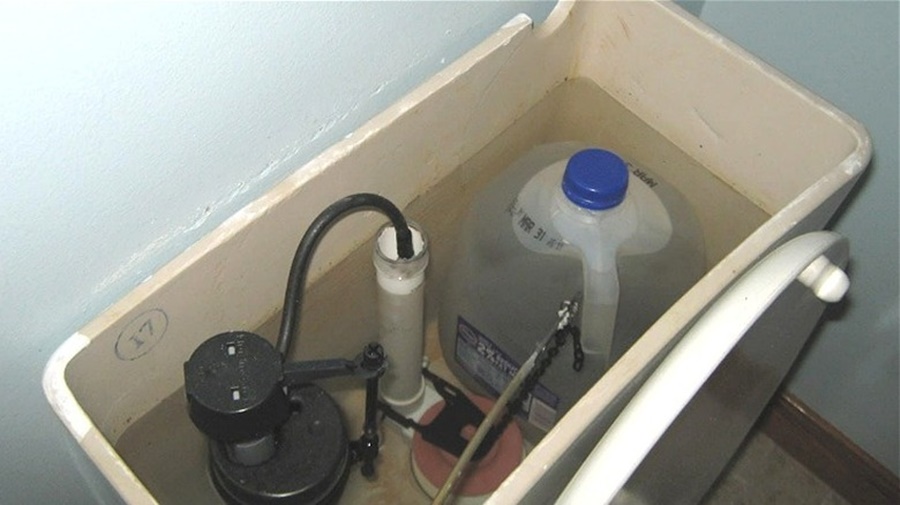Proper toilet functionality depends significantly on the water level in the toilet tank, a factor that directly affects flushing efficiency, water usage, and the overall performance of your plumbing system. Understanding the optimal amount of water your toilet tank should hold not only helps reduce water waste but also ensures effective flushing without overburdening your water bill.
Understanding the Standard Toilet Tank Water Level
The standard toilet tank water level should be set approximately 1 inch below the top of the overflow tube. Most modern toilet tanks hold between 1.6 to 3 gallons (6 to 11 liters) of water, depending on the design and age of the toilet.
High-Efficiency Toilets (HETs)
Toilets manufactured after 1994 in the United States are required to use no more than 1.6 gallons per flush (GPF). High-efficiency toilets, including dual-flush and pressure-assisted models, use as little as 1.28 gallons or less for a full flush. These models are designed to conserve water while maintaining adequate flushing power.
Older Toilets
Older toilets (pre-1994) can use up to 5 gallons per flush, making them significantly less efficient. If your toilet is older and you’re experiencing high water bills, it may be due to excessive tank water levels.
How to Check the Water Level in Your Toilet Tank
To verify whether your toilet's tank water level is appropriate, follow these simple steps:
1. Remove the Tank Lid carefully and place it aside on a flat surface.
2. Observe the Water Level—you should see a stamped line or marker inside the tank. This is usually the manufacturer’s recommended water level.
3. Compare the Water Height to the overflow tube. It should be about 1 inch below the top of the overflow tube.
4. If the water is too high or too low, you will need to adjust the fill valve accordingly.
Adjusting the Toilet Tank Water Level
Proper adjustment ensures efficient flushing while avoiding overflows or inadequate flushes. Depending on the type of fill valve your toilet uses, the adjustment process varies slightly.
1. Float Cup Fill Valve
Most modern toilets use a float cup fill valve. Adjust it by:
Locating the adjustment rod or screw on top of the fill valve.
Turning the screw clockwise to lower the water level or counterclockwise to raise it.
Flush and check the level again.
2. Ball-and-Arm Float Valve
This older mechanism uses a floating ball attached to an arm:
Bend the arm downward to lower the water level.
Bend it upward to increase the water level.
Be gentle to avoid breaking the arm.
3. Pressure-Assisted Tanks
Pressure-assisted toilets are a bit different and usually come with a sealed pressure vessel. In most cases, the water level is preset and non-adjustable without professional service.
Why Proper Water Level Matters
Ensuring the water level in the toilet tank is correct impacts several crucial performance aspects:
Efficient Flushing
If the tank contains too little water, the flush may be too weak to clear waste effectively. On the other hand, too much water might overflow into the overflow tube, causing continuous filling and wasted water.
Prevents Leaks and Water Waste
A water level that is too high can result in constant leaking into the toilet bowl, leading to higher water bills and unnecessary water consumption.
Extends the Lifespan of Internal Components
Maintaining the correct water level reduces the wear on the flapper, fill valve, and flush valve, preventing premature failure and the need for costly repairs.
How to Reduce Toilet Tank Water Usage
If you want to conserve water or reduce your bill, here are some tips:
Install a Dual-Flush Conversion Kit
These kits allow you to choose between a low-volume flush for liquids and a high-volume flush for solids, greatly reducing water consumption.
Use a Toilet Tank Bank or Displacement Device
Place a filled plastic bottle or a commercial toilet tank bank inside the tank to displace water, reducing the volume per flush. Be cautious not to interfere with the flushing mechanism.
Replace Old Toilets with WaterSense Models
EPA WaterSense-labeled toilets use 20% less water than standard models. They ensure performance while maintaining water conservation.
Signs Your Toilet Tank Water Level Needs Adjustment
Toilet runs continuously: Likely due to water overflowing into the overflow tube.
Weak flush: May be caused by insufficient tank water.
Gurgling sounds from pipes: Can result from air being sucked in due to low water levels.
Increased water bills: Often due to undetected leaks or inefficient flushing.
When to Call a Plumber
While many adjustments are simple DIY tasks, certain issues require professional help:
Persistent leaking after adjusting the float.
Cracked fill valve or flapper.
Old toilets with non-standard parts.
Water level not staying consistent despite adjustments.
Conclusion
The correct amount of water in a toilet tank is essential for ensuring effective flushing, minimizing water waste, and maintaining the overall performance of your toilet. Ideally, the water level should sit about 1 inch below the top of the overflow tube. This balance allows for a powerful flush without the risk of overflow or continuous refilling.
Adjusting the water level according to your toilet’s design—whether it’s a traditional, high-efficiency, or pressure-assisted model—can lead to significant savings on your water bill, while also preventing common issues like weak flushes, leaks, and running toilets. Regularly checking and fine-tuning the tank’s water level is a simple yet highly effective maintenance step that ensures your toilet remains reliable and efficient.

